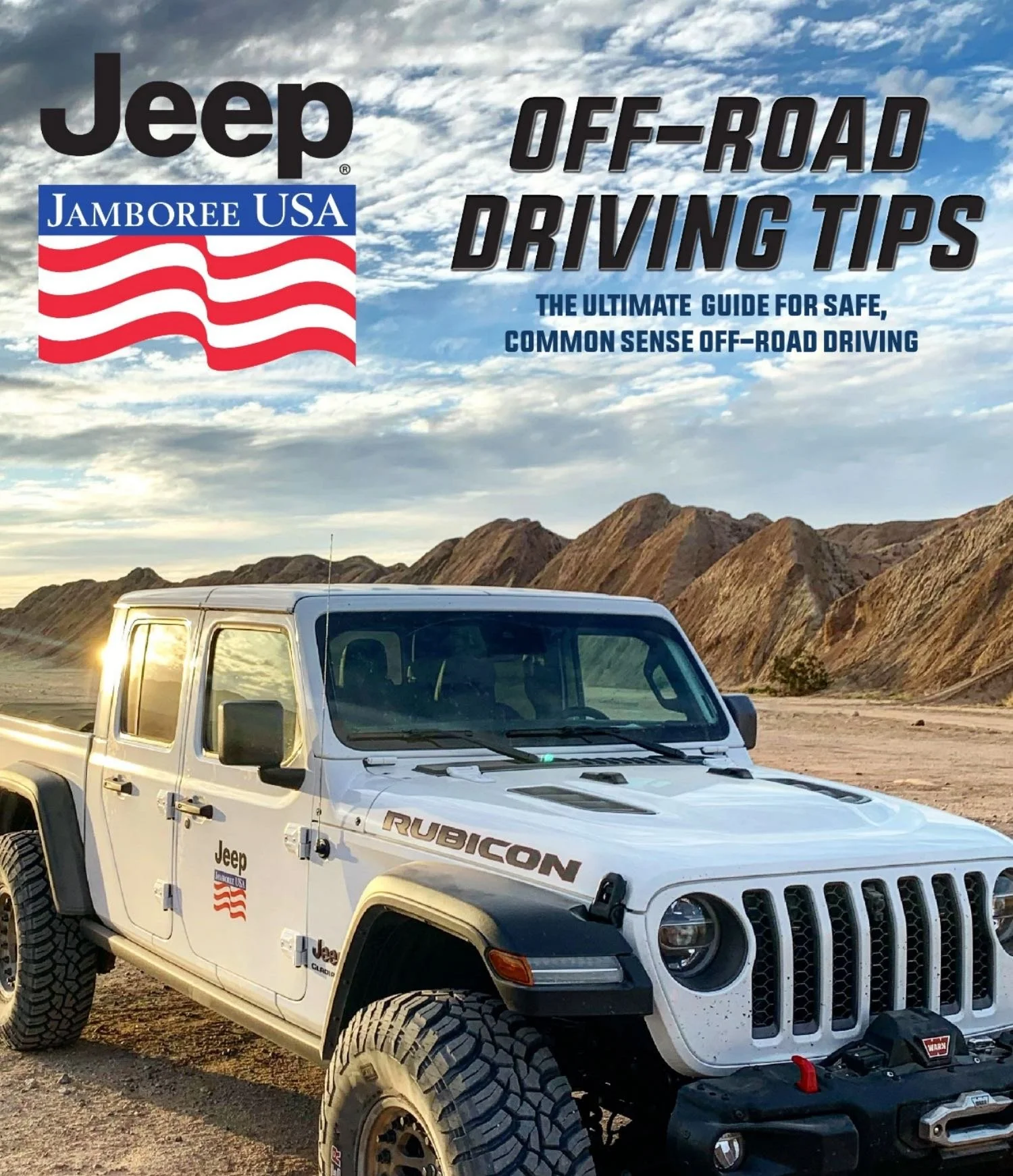Off-roading 101
Off-Roading quick tips
Introduction
Off-roading or “Wheeling” is an exhilarating way to explore the great outdoors. Whether you’re a beginner or an experienced off-roader, having a solid understanding of the basics, along with some preparation and best practices, will make your adventures safer and more enjoyable. This guide covers essential tips and techniques for Jeep owners who want to maximize their off-roading experience.
1- Preparing for Your Off-Road Adventure
a. Know Your Jeep
Understanding your Jeep’s capabilities and limitations is crucial:
Ground Clearance: Know your vehicle’s ground clearance to avoid damaging the undercarriage
4x4 System: Familiarize yourself with how to engage 4WD high and low
Tires: Check your tire type (e.g., all-terrain or mud-terrain) and ensure they are suitable for off-roading
Recovery Points: Identify the recovery points on your Jeep (usually located on the front and rear bumpers)
b. Essential Gear Checklist
Pack these essentials before heading out:
Recovery gear (tow straps, shackles, winch)
Tire repair kit and air compressor
First-aid kit
Fire extinguisher
Navigation tools (GPS, maps, or compass)
Tools (wrenches, screwdrivers, pliers)
Food, water, and extra clothing
Emergency communication device (Satellite phone)
c. Inspect Your Vehicle
Conduct a pre-trip inspection:
Check fluid levels (oil, coolant, brake, and transmission fluid)
Inspect tires for damage and ensure proper inflation
Tighten all bolts and secure loose items
Test lights and battery functionality
2- Off-Roading Techniques
a. Assessing Terrain
Mud: Use low gear, keep a steady speed, and avoid sudden stops
Rocks: Go slow, use a spotter if needed, and focus on tire placement
Sand: Lower tire pressure, maintain momentum, and avoid sharp turns
Water Crossings: Check depth and flow, and drive slowly to create a wake
b. Driving Tips
Always engage 4WD before you need it
Drive at a controlled speed; slow and steady wins the trail
Avoid wheel spin to maintain traction
Use engine braking when descending hills
Choose the proper line through/over obstacles to minimize risk
c. Recovery Techniques
Use recovery points for towing or winching—never attach straps to a bumper or axle
Clear the area of bystanders during recovery operations
Know how to safely use a winch and carry gloves to handle cables
3- Trail Etiquette and Safety
a. Leave No Trace
Stay on designated trails to protect the environment
Carry out all trash and dispose of waste properly
Avoid driving through sensitive areas, such as wetlands or meadows
b. Respect Other Trail Users
Yield to hikers, bikers, and equestrians
Give way to uphill traffic if you’re descending
c. Safety Practices
Always inform someone of your plans, including your route and expected return time
Travel with a buddy or group for added safety
Carry extra fuel and ensure your vehicle is fully fueled before heading out
Know basic first aid and emergency procedures
4- After the Adventure
a. Clean Your Jeep
Wash off mud, sand, and debris to prevent corrosion
Inspect undercarriage for damage or stuck debris
b. Maintenance Check
Check fluid levels and top-off if needed
Inspect tires and suspension for wear or damage
Tighten any loosened components
c. Reflect and Plan
Review your trip to identify lessons learned
Plan future adventures based on your experience
Conclusion
Off-roading in your Jeep is an adventure like no other, combining the thrill of exploration with the challenge of navigating rugged terrain. By following these tips, you can enhance your skills, protect your vehicle, and ensure the safety of everyone involved. Remember, preparation and respect for nature are key to enjoying the trails responsibly. Happy off-roading!
Off-Roading Guide by Jeep® Jamboree USA
Mark A. Smith Guide to Safe, Common Sense Off-Road Driving - Copyright 2021 - Mark A. Smith Offroad, Inc. All Rights Reserved

